Analysis: Armstrong’s Tour blood levels debated
Experts discuss American's published results
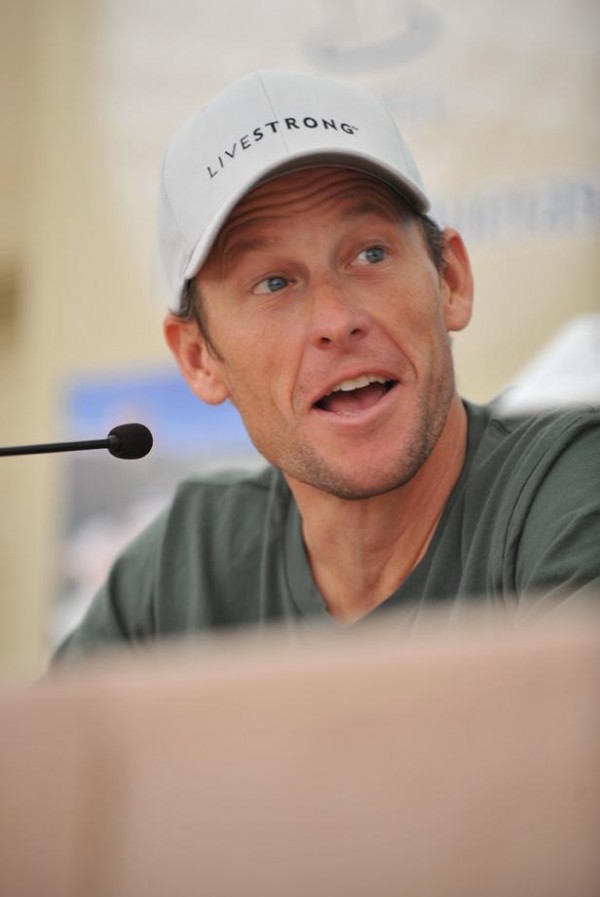

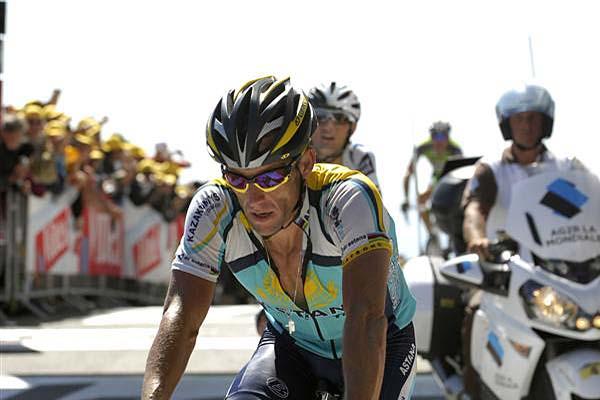
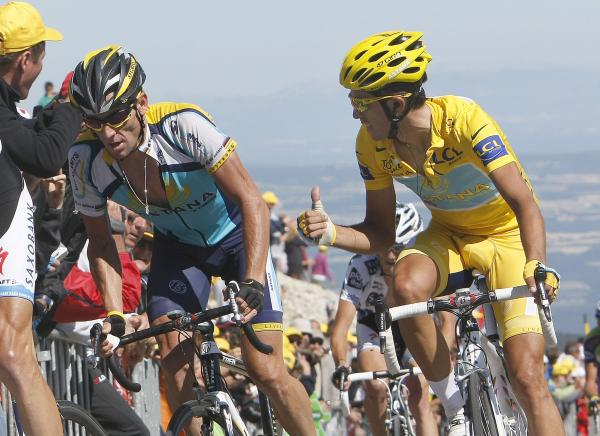

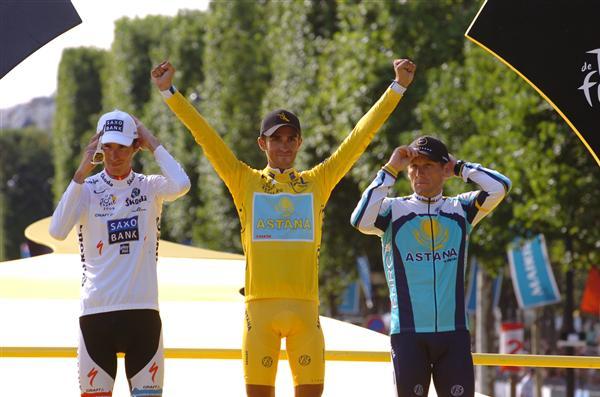
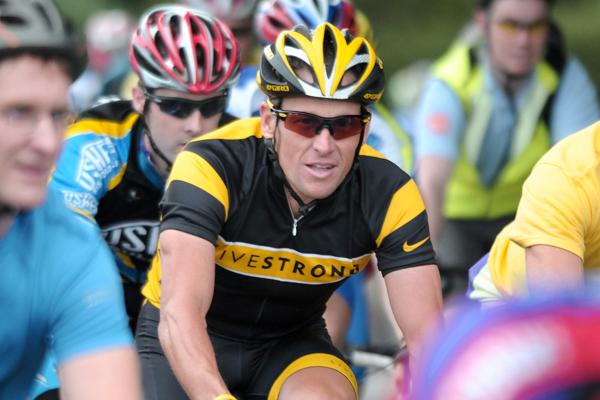
There’s been a varied reaction to questions raised by a Danish anti-doping researcher about the blood values that Lance Armstrong exhibited during this year’s Tour de France. The scientist Jakob Mørkeberg and his supervisor Bo Belhage have elaborated on their details, the International Cycling Union (UCI) and World Anti-Doping Agency (WADA) has largely declined to comment, and Astana anti-doping monitor Rasmus Damsgaard has said that it is up to an expert panel to assess whether or not the values are unusual.
Cyclingnews has sought to speak to all of the parties concerned in recent days. There has been no response to date from Lance Armstrong’s representatives, but others have given their opinion on the matter. As none of the individual parameters concerned cross set thresholds, the matter is a difficult one to judge; the analysis is based on the evolution of certain values, looking at longitudinal data in a similar fashion to the methods used under the UCI’s biological passport.
Mørkeberg has said that natural factors could possibly be an explanation, although at the same time both he and Belhage have described the progression of blood values as unusual and worthy of further scrutiny.
The questions raised
Last week Jakob Mørkeberg was quoted by the Danish news outlet DR Sport as saying that he had concerns about blood values posted by Lance Armstrong on the Livestrong.com website (link to external website opens in new window). The Bispebjerg Hospital anti-doping researcher has worked on many scientific studies, including a 2008 paper co-written with Belhage and Damsgaard entitled Changes in Blood Profiles during Tour de France 2007, and stated that expected trends over a three week race were not seen in the Texan’s data.
"What we know from our research is that during periods of hard activity, like in the Tour de France, we normally see a drop in these blood values. We don't see this with Armstrong," he told DR Sport.
He elaborated on this when speaking to Cyclingnews. “His blood profile contradicts what we see and what we know from international studies during the last few decades,” he said in a phone interview. “His blood values are not acting as we would expect, so that is highly unusual.” (see sidebar)
The latest race content, interviews, features, reviews and expert buying guides, direct to your inbox!
Mørkeberg has just finished a Ph. D. dissertation entitled Detection of Autologous Blood Transfusions via Analyses of Peripheral Blood Samples, and is working on a method to trace this method of doping.
His aforementioned Tour de France study catalogued seven riders in the 2007 race, revealing lower hemoglobin and lower hematocrit (percentage of red blood cells in whole blood) on day 19 when compared to their pre-Tour reading. On average hemoglobin dropped 11.5% and hematocrit fell by 12.1%, keeping in line with physiological expectations.
Mørkeberg ’s questioning about Armstrong’s Tour values stem from two facts; firstly, there is no significant difference between those two blood markers at the start and end of the race, and secondly, the values rise on two occasions during the event, around the time of the two rest days. In addition to that, they say that his reticulocyte (new red blood cell) levels are below expected levels, something which Mørkeberg and Belhage state can also be an indication of blood doping.
"It could be that he received some blood transfusions,” Mørkeberg told DR Sport. “This is not to say that he has [definitely] received one, but it could be an explanation."
He was asked if there were any other possible reasons. “If he had, for example, diarrhoea, and was dehydrated, it could lead to an increase in blood values," he answered. "But the picture is inconsistent with what we normally see. Armstrong's levels are unchanged from the first to the last test, and normally we expect a decrease. We saw this fall in his levels during the Giro d'Italia a couple of months earlier, but not during the Tour."
His superior backed up the questions asked by Mørkeberg. “I am completely in agreement with Jakob about his interpretation of the results,” he told Cyclingnews. “They are not normal, not dropping when you should expect them to drop. And on the other hand, the reticulocytes are dropping when they shouldn’t.
“Of course we cannot state that he is doping,” he added. “What we can say is that there are some similarities to our test subjects in the laboratory when we had given them external blood.”
The responses given
Given the gravity of the questions raised, Cyclingnews contacted Lance Armstrong’s spokesman Mark Higgins for comment. However, at the time of writing, no response has been received. We will publish his reply if and when it is issued.
The only comment given by Armstrong to date is a brief message on his Twitter feed: “How do I say "ssdd"[same shit, different day - Ed] in Danish?” he wrote last Thursday.
Cyclingnews spoke to Dr Rasmus Damsgaard on Monday about the claims. Damsgaard currently works with both Astana and Saxo Bank to interpret their biological passport results, and was previously involved – along with former Bispebjerg Hospital colleagues Belhage and Mørkeberg – in coordinating and analysing the CSC/Saxo Bank and Astana internal anti-doping programmes. He no longer works with the hospital and is now a consultant to the two teams, interpreting their biological passport results.
Damsgaard said that he was not satisfied that Armstrong’s results indicate wrong-doing on his part. “Using those guidelines that need to be beyond any reasonable doubt, I have not established that there was any illegal matter in this case,” he said. He added that he had faith that the UCI’s biological passport panel would fully scrutinise the results and their decision should be respected.
“I’m just one person and even if I miss something, I have full confidence in the UCI expert panel that they would find it,” he said. “There are 10 or 12 experts with different points of view and they can look through it better than I can on my own.”
Given that Armstrong’s start and finish blood values in the Tour were almost identical, Cyclingnews quoted the scientific paper written by Damsgaard, Mørkeberg and Belhage on 2007 Tour de France riders, where significant drops were seen in hemoglobin and hematocrit. Taking this finding into consideration, does Damsgaard understand why Mørkeberg is asking questions?
“I always understand why people ask questions and I definitely think that they should keep asking questions,” he answered. “What I think is that there were seven riders in the paper that we wrote together…knowing that a million biological factors can influence, I think that as a person of science you need to make the public aware that these are not unique results, these are results that are based on a lot of biological factors that have to be established.
“Before you can say beyond any reasonable doubt that a fault has been seen, you have to know all the biological factors from a scientific point of view… You need to consider what different factors might influence things, even all the way back to the genetic factors. I know that there are some controlled studies showing some kind of pattern, but it is far from fully proven that this kind of pattern is the one to be expected.”
A logical follow-up question to that is, even if Armstrong has a unique physiology, how do his Tour results square with those from the Giro, which showed over a five point drop in hematocrit?
“I can speculate a lot between the two races and the differences between the two,” Damsgaard answered. “[But] these kinds of blood profiles should be exposed to the scientific algorithms, to the Bayesian model and WADA and UCI rules of upper and lower limits. They should be considered by an expert group with a lot of experience, by 10 or 15 people.”
While Damsgaard describes Mørkebjerg as a “very competent researcher”, his contention is that concerns should be studied and any doping proved before the media is involved.
“I know with my work with the teams, with the UCI and FIS [the international skiing federation], you have to establish that each result is correct before making any accusation,” he said. “I believe if you call WADA, they’ll say that the one of the most essential parts is to be able to follow up legally. In addition to the biological factors, you also have to determine that each result in a profile is valid. Therefore, I think it should be scientifically scrutinised by a larger panel of experts before scientists express their opinion, and that the protection of the athletes is respected.”
The UCI took the same approach when contacted by Cyclingnews, the governing body stating that it will not speak about athletes unless it wrongdoing has been proven.
“Lance Armstrong is part of our Biological Passport,” UCI spokesman Enrico Carpani said. “As for all profiles generated within this programme which are submitted on regular basis for reviewing to the independent experts, the UCI doesn't and won’t make any comment.”
WADA also declined to talk about the questions raised. “For the time being, this issue is one for the UCI to consider in terms of results management for any particular case,” a spokesman said on Thursday.
“WADA is currently preparing harmonized protocols for anti-doping organizations conducting longitudinal analysis for anti-doping. It will certainly look further into such variations of blood parameters as part of the ongoing work of its expert groups in relation to the Athlete Passport.”
As stated earlier, Armstrong has not responded as yet. In the meantime he has been defended by the Norwegian professor Hans Erik Heier, who said that he didn’t believe an athlete with such blood levels was doping. “The hemoglobin values are too low for it to be possible to manipulate them down there,” he told Dagbladet. “I interpret this to mean that he must be clean.”
What next?
There will be debate about whether or not Mørkeberg and Belhage were correct to speak to the media with their concerns. Damsgaard states that protection of the athletes is important, and this is a valid point. But in putting his results online and using those to back up his assertion that he is a clean rider, Armstrong is enabling scrutiny and comment from experts in relation to his values.
“As scientists, I think our job in this matter is that when something gets posted on the internet and is not normal, we need to say that this is the case,” said Belhage. “Otherwise, if you let it sit there and it is unchallenged, then it would [otherwise] be seen as perfect.
“After that, our job is done,” he added. “Any other action should be evaluated by the usual councils that are sitting and evaluating blood profiles and putting the data together.”
While his position is that the Tour values don’t prove wrongdoing when exposed to the scientific acknowledged algorithms, Damsgaard is in agreement with this latter point. “I definitely think it should go all the way to the expert panel and they should reach a consensus,” he said. “We need to establish it beyond any reasonable doubt if something was wrong.
“I think that the expert panel is brilliantly and very intelligently put together, because they possess knowledge of all different angles,” he said. “I believe that in unclear cases where biological and methodological factors are known to be involved, then you have to raise it to the absolutely expert panel level, where they have to have a unique consensus on the result.
“You have to bring this along to at least 10 to 15 people rather than a single one, people with different experiences that can have a look at this and come to a conclusion. The UCI’s biological passport has an expert panel that consists of the right people. They may have reviewed this one already, I don’t know, but I have full confidence in that panel.”
The points
Jakob Mørkeberg raised three points about the blood readings posted online, explaining why he felt there was the possibility of blood doping.
No significant change in values between the start and end of the Tour: According to the Livestrong.com website, Armstrong’s hematocrit readings on July 2nd and July 25th were almost identical at 42.8 and 43 percent respectively, with hemoglobin levels of 14.3 and 14.5g/dl. In contrast, his hematocrit levels at the start and finish of the Giro d’Italia were 43.5 versus 38.2 percent, a drop of over five points.
Increase in levels during the race: Mørkeberg also highlights the increases seen around the two rest days; on July 11th the hematocrit value was 40.7, increasing to 43.1 on July 14, while the July 20th and July 25th morning blood control levels were 41.7 versus 43. This year’s rest days were July 13th and 20th.
Low reticulocyte count: Both Mørkeberg and Belhage state that the normal level of new blood cells, or reticulocytes, is approximately one percent. Armstrong’s reticulocyte readings during the Tour ranged from 0.5 to 0.7, consistently lower than his average value seen earlier in the season.
Belhage says that while both hemoglobin and hematocrit can be modified by issues such as dehydration or diarrhoea, reticulocytes are not. “They are not affected by fluid changes,” he asserted.
Who’s who
Jakob Mørkeberg has written 10 peer-reviewed papers on blood doping within the past three years, and has completed a Master’s thesis entitled Autologous Blood Doping. He has just submitted a PhD dissertation Detection of Autologous Blood Transfusions via Analyses of Peripheral Blood Samples. One of his major goals as an anti-doping researcher is to find a method to detect such transfusions in sporting competitions such as the Tour de France.
He was involved in the running of the CSC and Astana anti-doping programmes until the end of 2008.
Bo Belhage is a chief anaestesiologist at Bispebjerg Hospital and has written 53 publications; of these, 41 are peer-reviewed, two peer-reviewed in press (pending) and 10 book chapters. He is a Doctor of Medical Science, an Associated Research Professor, and was also involved in the running of the CSC and Astana anti-doping programmes. He has been involved in science for 21 years.
Rasmus Damsgaard is a doctor currently specializing in Anaesthesiology, and was a past Secretary General for Information of the Danish National Anti-doping Agency 2000-2004. He is a International Skiing Federation (FIS) anti-doping program manager and member of its medical committee, and has been a ‘review board’ member for international tennis and cricket.
He is a member of "review boards" in international tennis (ITF, ATP, WTA) and international cricket, and has done international research n anti-doping related issues from testosterone to autologous blood transfusion tests.
Damsgaard has attended meetings in WADA’s blood profile group. He was previously highly involved in the running of the CSC and Astana anti-doping programmes, and now works as a consultant for the Astana and Saxo Bank teams, interpreting their bio-passport results.